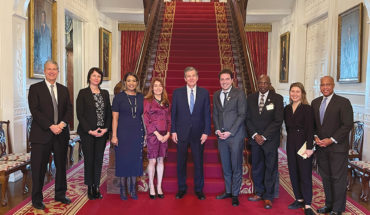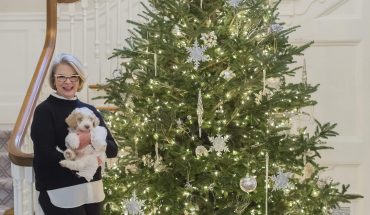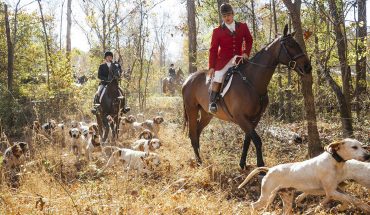photographs by Geoff Wood
We all have one. Another side to the one most folks know. For some, it’s a small thing: A hobby, interest, or minor talent. For others, it’s a big part – if not the main part – of who they are. Not only are these folks unusually good at this other thing, the pursuit itself says something important about them.
Maybe it’s because Raleigh has so many talented people in general that we’re home to so many who also have a significant sideline pursuit. We’re eager to tell their stories throughout 2014. Here’s the first installment of a continuing series: Alter Egos.
 Philanthropist and farmer: Eliza Olander
Philanthropist and farmer: Eliza Olander
Farmer? It’s not the description many would have of the wine connoisseur and philanthropic force that is Raleigh’s Eliza Kraft Olander.
But what else do you call a person who plants and nurtures her land, then reaps and sells its rewards? By that definition, Olander is a farmer, and a proud one, too.
Known for her tireless devotion to causes like the Frankie Lemmon School for children with developmental disabilities, the YMCA, the Southern Foodways Alliance, and Band Together, she donates at least $1 million to local charities every year and raises even more.
 Some of the fundraising goes on at her 55-acre estate in North Raleigh, home to a world-class collection of wine and art. It’s also where she grows fruit, vegetables and flowers. It’s where she nurtures thousands of bees that produce honey, and 17 chickens that lay eggs. And it’s where she harvests and packages these goodies with ribbons and sparkles to sell to raise more money for more good causes.
Some of the fundraising goes on at her 55-acre estate in North Raleigh, home to a world-class collection of wine and art. It’s also where she grows fruit, vegetables and flowers. It’s where she nurtures thousands of bees that produce honey, and 17 chickens that lay eggs. And it’s where she harvests and packages these goodies with ribbons and sparkles to sell to raise more money for more good causes.
“These are the tussie-mussies,” she says, showing a visitor a kitchen countertop covered with small ribboned bouquets of roses, dahlias, ferns, hosta leaves, and herbs like mint, rosemary, and sage. “My mother taught me how to make these when I was 10.” She takes a few hours every week to cut and arrange them in recycled jelly jars. Because she’s found that folks are typically unfamiliar with the Victorian-era term “tussie mussie,” she sells them as “nightstand nosegays” for $5, a price that also includes half a dozen homegrown eggs. Like the flowers, the eggs arrive in style. Olander buys pink cardboard cartons online and ties them with pink raffia. “Aren’t they cute?”
They’re cute, but they don’t begin to rival the honey, which Olander helps to harvest while clad in full beekeeping regalia, then decants into jars she ties with honeycomb ribbon and adorns with glue-gunned costume jewelry: starburst brooches, emerald earrings, diamond drops. “I do all kinds of things with the honey,” she says.
The honey – which she sells for $8 a jar – got fancy after Olander became handy with a glue gun in order to decorate 80 bird houses. Those she gave to wineries that participated in the Triangle Wine Experience, a fundraiser she spearheads here every year for the Frankie Lemmon school.
At one point, her partner Brian McHenry intervened. “Brian actually said to me: ‘Put down the glue gun. Step away from the glue gun,’ ” she laughs. “I said: ‘What else can we bling up?’” She hoists a bedazzled sugar bowl.
The impulse to celebrate beauty and to raise money with it is not a new one for Olander, who has used her famous collection of more than 25,000 bottles of fine wine to help raise millions.
She decided to apply the same idea to her vast gardens when they produced more flowers than she could possibly use or give to friends, and her chickens (in their beautiful churchlike coop) laid more eggs than she and her friends could eat, and her bees made more honey.
“I just thought, what am I going to do with all of this? My friend Karen Pearce owns a nail salon, and she said, ‘Why don’t you bring them in here and sell them?’ ”
The women in Pearce’s Hair Graphics salon on Falls of Neuse Road swooped on Olander the minute she arrived that first time, and continue to do so every Friday. “It’s all gone within three minutes,” she says. Most of the people who buy her goodies are repeat customers, and they bring the jars and egg cartons back for her to re-use.
Olander figures she’s raised about $1,200 since she started last summer.
“But it’s not just about the money, and it never is,” she says. “It’s about spreading the word and doing the right thing. Having that opportunity – to do the right thing – is joyful.” – Liza Roberts
 Judge and writer: Rich Leonard
Judge and writer: Rich Leonard
“Insomnia is my greatest friend,” says Rich Leonard, former federal judge and newly appointed dean of Campbell Law School. “I can get so much done between three and four in the morning.”
Lately, that “so much” has been writing and publishing a historical novel, The House by the Creek. The book is aimed at fourth and fifth graders who are studying American history, and it’s been a run-away success, selling well locally and across the state.
Despite too few sleeping hours, Leonard wakes raring to go for his day job. Four months into his appointment, Leonard calls the change “exhilarating!”
“It’s a whole new set of challenges, rules and expectations,” he says. “I get up early every morning, fired up and ready to go.” He cites daily interaction with students as a primary joy of his new job. As a judge, Leonard loved working with and training new law clerks. “They’d come in wide-eyed and leave as polished professionals a year later.” Leonard’s job at Campbell is “a chance to have that kind of impact on a larger scale.”
Leonard grew up in the tiny Piedmont town of Welcome, N.C., and read incessantly as a child. “When I was 13, my dad took me down to get a work permit so I could work at the Davidson County library. So when Mrs. Tussy (the librarian) had to take a day off, I could fill in. I wore a key to the library around my neck.” As assistant librarian, Leonard re-shelved books, waited on customers. And read history.
Leonard wondered why none of the young-adult books he read on the Revolutionary War mentioned military campaigns around the Piedmont. There was a rich history here, he knew, but it wasn’t being represented.
He didn’t consider rectifying the situation, however, until seven years ago, when a cousin sent Leonard a family tree that traced his heritage back to Valentine Leonhardt, a German immigrant and Revolutionary War soldier.
At a time when many, if not most, German immigrants remained loyal to the British crown, Leonard learned that Leonhardt had been instrumental in persuading other German families to fight for freedom. And possibly for that reason, he was assassinated. An obelisk stands in Leonhardt’s memory at Pilgrim Lutheran church outside of Lexington, N.C., and his former farm lies about three miles away from where Leonard grew up almost 200 years later.
After learning he was a direct descendant of this important soldier, Rich Leonard began researching him and writing his findings down in narrative form. “I thought it would just be a collection for children and grandchildren,” he says. “I didn’t do anything sequentially.” When he found several different references in local histories to a log in which Valentine Leonhardt hid valuables, he thought, “Now I’ve got my literary device!”
 In The House by the Creek, Leonhardt takes his three older sons with him to join General Nathanael Greene’s army, leaving his wife Elizabeth, their teenage daughters, and three younger children behind. The book gives an account of both the home front and the battlefront. Valentine Leonhardt was 58 when he left for war, and Leonard was 58 when he wrote the book, and though Leonard has five children (not eight), he says the leave-taking scene held special poignancy. “I had two grown sons and three little ones, 8, 6, and 5, who really would have been left home at that time.”
In The House by the Creek, Leonhardt takes his three older sons with him to join General Nathanael Greene’s army, leaving his wife Elizabeth, their teenage daughters, and three younger children behind. The book gives an account of both the home front and the battlefront. Valentine Leonhardt was 58 when he left for war, and Leonard was 58 when he wrote the book, and though Leonard has five children (not eight), he says the leave-taking scene held special poignancy. “I had two grown sons and three little ones, 8, 6, and 5, who really would have been left home at that time.”
It’s one of Leonhardt’s younger children, Jacob, who saves the family from ruin after his father’s death, by revealing the secret location of the Leonhardts’ log safe containing gold and his father’s will. This will, written in German, is still housed in the Salisbury courthouse.
Each scene in the book was exhaustively researched. “It was important to get the macro-history right so that people could use it as a teaching tool,” he says. “I’ve got the battles in the right place, rivers in the right place, the commanders in the right place.”
The novel, which is enjoying brisk sales at Quail Ridge, is also being sold by bookstores at national parks. It took three months of historical vetting before the department would agree to sell it; today they’re regularly selling out of copies. The House By the Creek also received a positive review in School Library News, meaning that school and public librarians across the country may pick it up. Local elementary schools have embraced the book already. Underwood Elementary, where Leonard’s own children attend, is one.
Leonard says he especially enjoys speaking to school groups. Recently, he spoke to fourth graders in Yadkin County, all of whom had read his book in class. “Did it really happen around here?” they wondered. Leonard asked if any of them lived on Shallowford Road, and several hands went up. “Remember in the book when Cornwallis has to turn north in order to cross the Yadkin? Well that was the shallow ford. That was Shallowford Road.”
“Wow!” the kids exclaimed. The author, judge, and law school dean smiled. -Ann Brooke Raynal
 Surgeon and craftsman: Dr. Jack Inge
Surgeon and craftsman: Dr. Jack Inge
Dr. Jack Inge is an ob-gyn surgeon at Rex Hospital and a nationally known trailblazer in robotic surgery. Doctors come from around the country to watch him at work and learn his techniques. To say he’s good with his hands is putting it mildly.
When he’s not delivering babies or performing complicated surgical maneuvers, Inge still cannot rest his hands. The result? A collection of hobbies that demand both fine motor skills and determination.
Inge, who looks younger than his 50 years, has energy and enthusiasm to spare. He runs his fingers though his sandy hair and admits: “I don’t sleep a lot. There’s too much to do! I’m always turning new ideas over in my head.”
Born at the old Rex Hospital, Inge grew up in Raleigh. He began working with leather at 13 when a friend gave him some old tools. Inge would buy a whole cowhide and cut it up into belts to sell at his father’s produce company. As a teenager, he made enough money selling belts to buy a motorcycle.
He’s still at it today, creating things out of leather – and all sorts of other materials, too. He shows off bumpy alligator wallets, hand-carved leather belts with intricate leaf motifs, a leather computer bag and a suitcase carved and stitched by hand.
He has been studying the craftsmanship of French leather-goods maker Louis Vuitton. “The quality of Louis Vuitton is the only thing I can’t replicate. Yet.”
Though most people would be proud to wear and carry Inge’s finery, he did make a pocketbook for his wife Sheryl that missed the mark. Inge turns over the pocketbook made of cow leather, ostrich skin and rabbit fur. “I asked her why she wasn’t using it and she said it was so nice she didn’t want to take it out of the house.”
Inge describes his wife as a “saint” who has also indulged his penchant for collecting antiques and a fascination with craftsmanship that dates back to his childhood. Their house near Rex’s main campus is filled with pieces he’s collected over the years, many bought at auction, including several items from the set of the movie Midnight in the Garden of Good and Evil. To this collection Inge adds the elk antler candelabra he made and a giant grizzly bearskin rug, complete with head, that hangs over the upstairs railing.
When Inge sees something beautiful in form and function, he says he wants to make it himself. Which is how he got started making knives.
“I was at a gun show one time, and I saw some gorgeous handmade knives. And I whispered to my wife, ‘I can do that!’” He explains the process, which sounds deceptively simple: “First you take a piece of scrap metal and heat it to 2,000 degrees. . . ” Inge installed a gas oven in his garage just for this purpose. After getting the metal unthinkably hot, Inge shapes it, cools it, and often carves patterns into the metal with a file.
 Most of his knife handles are made of animal bone, since bone lasts longer than any wood. He might choose alligator jawbone, ivory, or various kinds of antlers. “My patients come in all the time with antlers for me!” He shows off a kitchen knife with a handle fashioned of camel shinbone. “I want to make a whole set of these kitchen knives,” he says.
Most of his knife handles are made of animal bone, since bone lasts longer than any wood. He might choose alligator jawbone, ivory, or various kinds of antlers. “My patients come in all the time with antlers for me!” He shows off a kitchen knife with a handle fashioned of camel shinbone. “I want to make a whole set of these kitchen knives,” he says.
The large dressing room off the master bedroom functions as showroom for Inge’s gun and knife collection. Hundreds of wall-mounted guns and knives claim every bit of wall space. Deer antler sconces he fashioned light up the space.
Inge’s “saintly” wife is also the beneficiary of his art. A couple of years ago, she wanted to re-do the kitchen cabinets, but Inge offered to do the work himself. It took months of nighttime and weekend work, but the result is impressive.
Lately, Inge has been trying his hand at painting. “I met (legendary coastal artist) Guy Harvey at the beach. He was painting this fish. And the thing was probably going to sell for $25,000. And I whispered to my wife, ‘I can do that!’ ”
So he bought some paint and he set to work, filling his family room with canvases of swordfish and ocean scenes. The accuracy of those hands might impress a professional artist, but his family keeps him humble. Inge mimics his own children’s reaction to his new hobby: “Dad’s insane! He’s painting now?”
But wait. There’s more. A practitioner of various martial arts including Kendo, the Japanese art of sword-fighting, Inge also admits to a fascination with swords. And what he has learned from the ancient discipline has informed his practice in the operating room. “The Japanese do the same draw thousands and thousands of times. An American will pull a sword out and start swinging it, but a Japanese fighter cuts you across the heart. One motion. It’s so efficient. In my job, I practice the same movement thousands and thousands of times, until I can do it effortlessly.”
“You have to find out what are you good at in life,” Inge muses. “You have to follow your passion.” He smiles the smile of a man whose talents and interests intersect at every turn. -Ann Brooke Raynal



